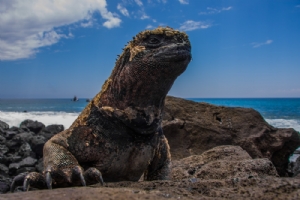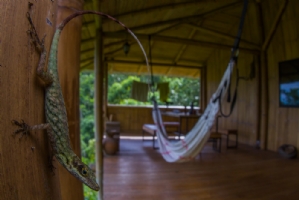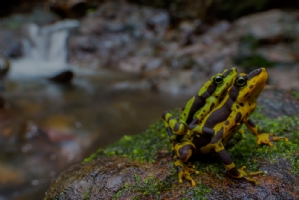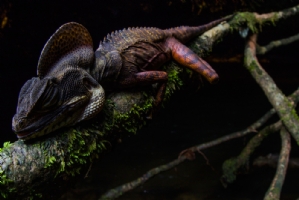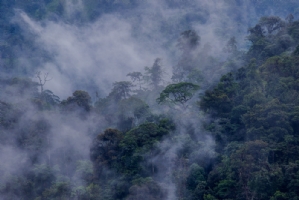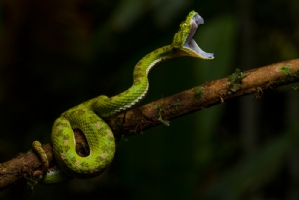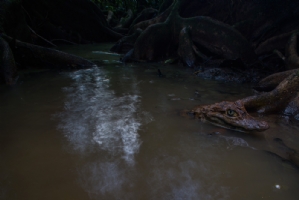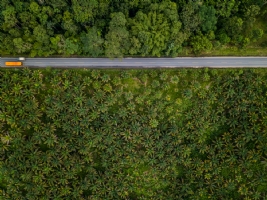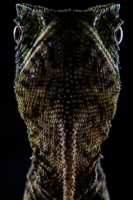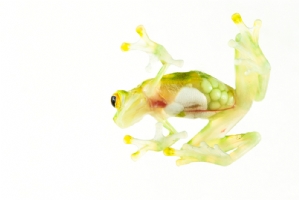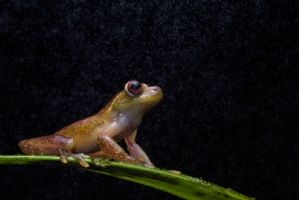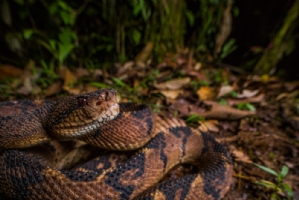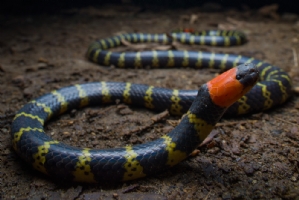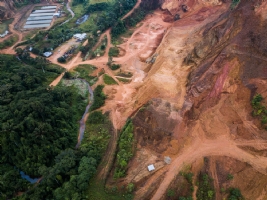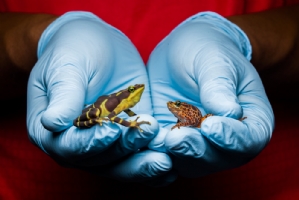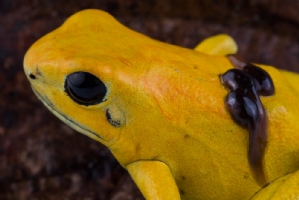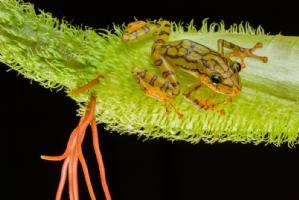Gallery MontPhoto biennial grant 2017
Reptiles y anfibios del Chocó: SOS en el paraíso
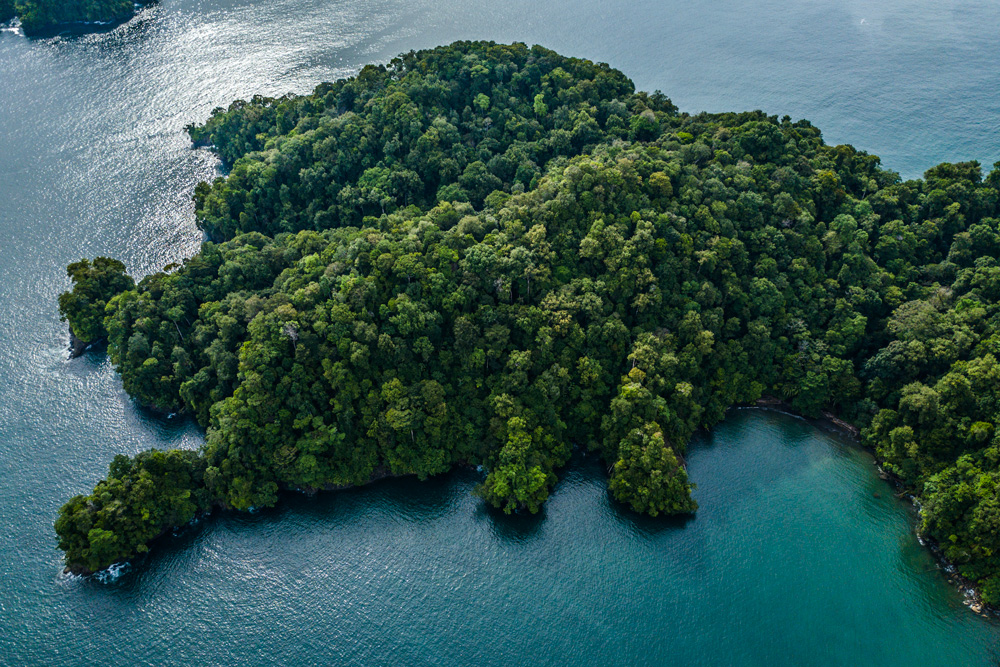
AUTOR/S
Jaime Culebras
I studied Biology and a master's degree in Environmental Education at the University of Extremadura. After that I took another master's degree in Biodiversity and Conservation of Tropical Areas in Ecuador. Since then I work in this country as a researcher, describing new species, and as a photographer.
I am passionate about everything that has to do with the world of nature, especially tropical regions as they are the most affected by human activity. Perhaps my concern for these areas close to the equator is the reason why I took part in the Quetzal route in 2002, an unforgettable trip that I was lucky enough to experience.
I have an inherent need to travel with my camera, trying to capture everything my eyes see through its lense, which I consider a powerful tool to fight for conservation.
My goal: To make up minds and get people a bit closer to the environment, freezing the shapes, colours and secrets of nature through images and words.
FULL REPORT
It's been 6 years since I first heard about the tropical forest of Choco. There I met Raúl Nieto, a man whose eyes sparkle when he talks about his reserve "Itapoa", a piece of land located in the middle of a primary forest that can be reached after a 7-hour hike in Northwest Ecuador. He told me about its crystal-clear rivers, its centennial trees, its birds, monkeys, jaguars, the singing of the frogs at night. Not long after that I visited the place and was absorbed by its visual richness. But, a part of me broke as well. When you hear about the jungle you imagine a huge and purely green space that stretches for as far as the eye can see, but reality is very different. Only to get to the starting point, we had to drive for hours through vast areas of African palm crops, while loggers devoured the immense trees along the rivers on the other side of the road. What used to be a source of life had been turned into poor monocultures exhaling drought and pesticides.
The devastation of Ecuador's Choco region started with the Agrarian Reform of Ecuador in the 50s. Estimates show that only between two and four percent of its primary forest remains.
This region, which integrates the Tumbes-Choco-Magdalena "HotSpot" and covers 274,597 km² between Southern Panama and Northern Peru, is one of the wildest areas on the planet with around 9.000 species of plants, 830 species of birds, 235 species of mammals, 350 species of amphibians and 210 species of reptiles. Many of these species only live there, they are endemic. For instance, 60% of amphibians are endemic.
When it comes to fauna, I have always been interested in reptiles and amphibians, and that has made me try to get to know all those species living at Choco, from the most colourful one to the least loved one. These animals have a bad reputation and suffer indiscriminate killings and in general, there are not many efforts to protect them. But in my experience, when someone takes the time to get to know these creatures a little, the perception changes radically, from antipathy to curiosity and even admiration.
After years of traveling through Ecuador and knowing almost all the species of reptiles and amphibians of Ecuadorian Choco, I have been able to describe 3 new species - alongside other researchers - of frogs from this region: the Hyloscirtus mashpi, the Pristimantis buenaventura and the Pristimantis nietoi. The latter is dedicated to Raúl for his dedication and work in the conservation of Choco.
But, what comes out of articles explaining the problem with incomprehensible technical terms? How many people read science magazines? How can we reach a wider audience with these important discoveries and highlight the importance of reptiles and amphibians? How can we motivate society to protect these animals and Choco? What about Choco in Colombia and Panama?
All these questions have the same answer expressed in two lines: "A picture is worth a thousand words" and "You do not protect what you do not know".
In each trip this year I have tried to combine research and photography given that knowledge (research) is an engine of conservation and dissemination (photography), a way to spread that knowledge.
Photography is a useful tool and I have captured and shown the beauty and importance of these animals in battered Choco, including, since 2017, Colombia and Panama.
Details of their skin, their eyes, their intimacy, the dreamy landscapes they live in. Every part of their body and every moment has a priceless value, one that can change people’s mind from despising them to loving them. It has therefore been necessary to reach remote places by land, sea and air, fighting days and days of intense rain, heat and frustration as the tropical regions are areas where photographic logistics collide with a thousand inconveniences.
But, step by step, the most emblematic and beautiful species have made their appearance before the camera, some of them almost non-existent in photographic records. Mystical Marine Iguanas of the Galápagos, snakes like the huge and elusive Verrugosa (the largest viper in the world) resting on leaf litter in the Darien forests, invisible glass frogs that go unnoticed among the foliage of the riverside trees in primary forests, chromatic poisonous frogs that sing during the day in the shade of the forest while carrying their tadpoles on their backs and the almost extinct Atelopus mating on the banks of small affluents.
All this research and photographs would not have been possible without the help of countless organizations, communities and people who live in the field who were always welcoming and helpful and accompanied me on my trips to learn how important reptiles and amphibians are and discover their valuable ¨chocoan¨ home.
It is amazing how useful informative talks through photography and direct contact with these animals are. I have been able to observe with absolute success how people who have hated or feared reptiles and amphibians change their minds in full admiration and how willing they are to preserve the species once they are introduced to nature.
Unfortunately, the dark side of degradation is always present. Along with African palm and timber plantations, there are mining companies, illegal coca crops and shrimp farms that shrink coastal mangroves. And they always have a common factor: Less accessibility to our most precious resource, water, even though the Choco is the place with highest rainfall on the planet.
And now what?
The fight does not end. It is time to continue discovering and spreading knowledge about the world of reptiles and amphibians of the Choco, not only through photography but workshops, talks and conferences and in collaboration with cocoa farmer groups and marimba music groups, those attached to these small animals living in Choco. There are many species that keep disappearing little by little and must be studied and portrayed to present them to the world, including those that remain unknown to science.
Rules of the web site | Legal advice | Privacy statement | Cookies policy | Change cookies preferences
Administration | Web design: ATMultimedia.com

